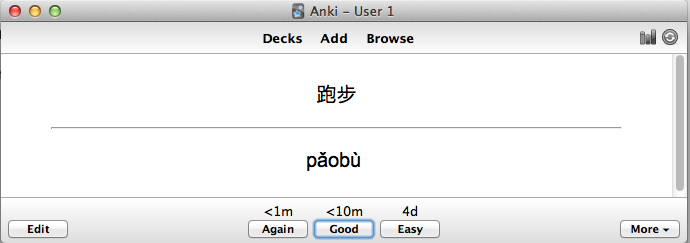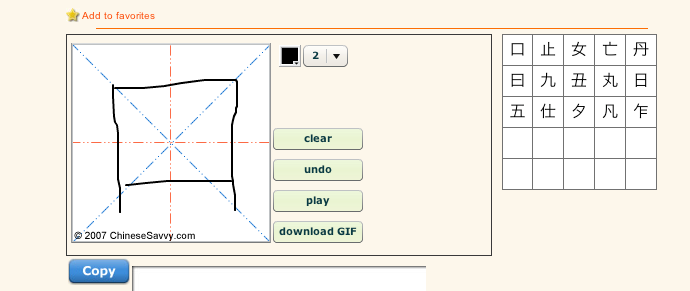Using Anki for Spaced Repetition
Published on August 24, 2013When you’re learning a new skill, it can be easy to forget information you’ve already encountered. A vast amount of research has been done to study remembering and forgetfulness in learning, and it has been shown that spaced repetition—being reminded of what you’ve learned at strategically spaced intervals—greatly improves your chances of recall. In this brief post, I’ll show you the tools I use for spaced repetition.
One of the most beloved tools of learners everywhere is Anki, a spaced repetition program available on Windows, Mac, or Linux. It allows for the creation of digital flashcard decks that you review daily. Anki intelligently keeps track of how difficult it is for you to recall a piece of information (based on a self-rating), and re-prompts you at the optimal time for retention.

It’s extremely simple to input flashcards into Anki, and it’s just as easy to install and set up using the documentation on the website.
Rosetta Stone—ChineseSavvy/Pinyin—Anki
It can be difficult as a Chinese learner to input flashcards; I still haven’t figured out how simplified Chinese character input works with a keyboard.
But I did devise a method of getting pinyin and characters into Anki.
If you’re learning Chinese, you’ll likely come across a word for which you’ll either have a character or the pinyin. In either case, chinesesavvy.com has got you covered.
If you could draw an approximation of the character, visit chinesesavvy’s character writing tool and begin to draw the character in the input box. Magically as you draw, possible characters will show up to the right. Click on one, and it’ll appear in the text box below, from which you can copy and paste it into Anki.

Alternately, if you have the pinyin and need the character, go to chinesesavvy’s pinyin character input. This part is a bit confusing, and it took me a bit to figure out. Place your cursor in the input box, and begin to type the pinyin. Possible characters will show up in the box to the right. If you see the character you’re looking for, press the number on your keyboard corresponding to the character you want, and it’ll appear in the text box you began to write in.

You can also type pinyin directly into Anki. (Curious about how to type the diacritics such as ǎ and ǚ? Here’s how on a Mac and on a PC.)
This has been particularly important for me, because I’m trying to stay consistent with Rosetta Stone’s immersion approach, and there are a number of characters I recognize alongside their illustrations, but not on their own. Now I can leverage Anki to make sure I never forget them, and you can, as well.